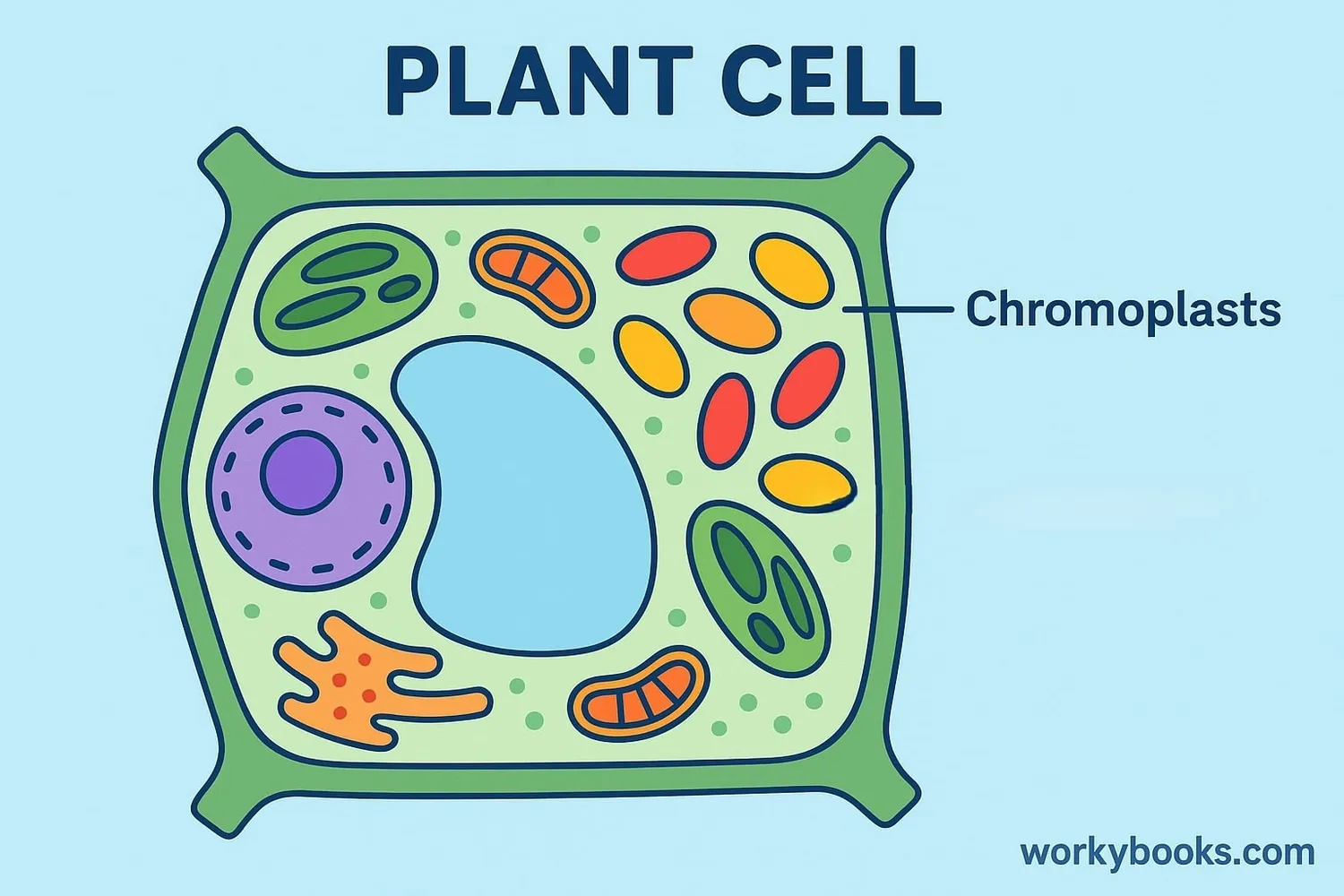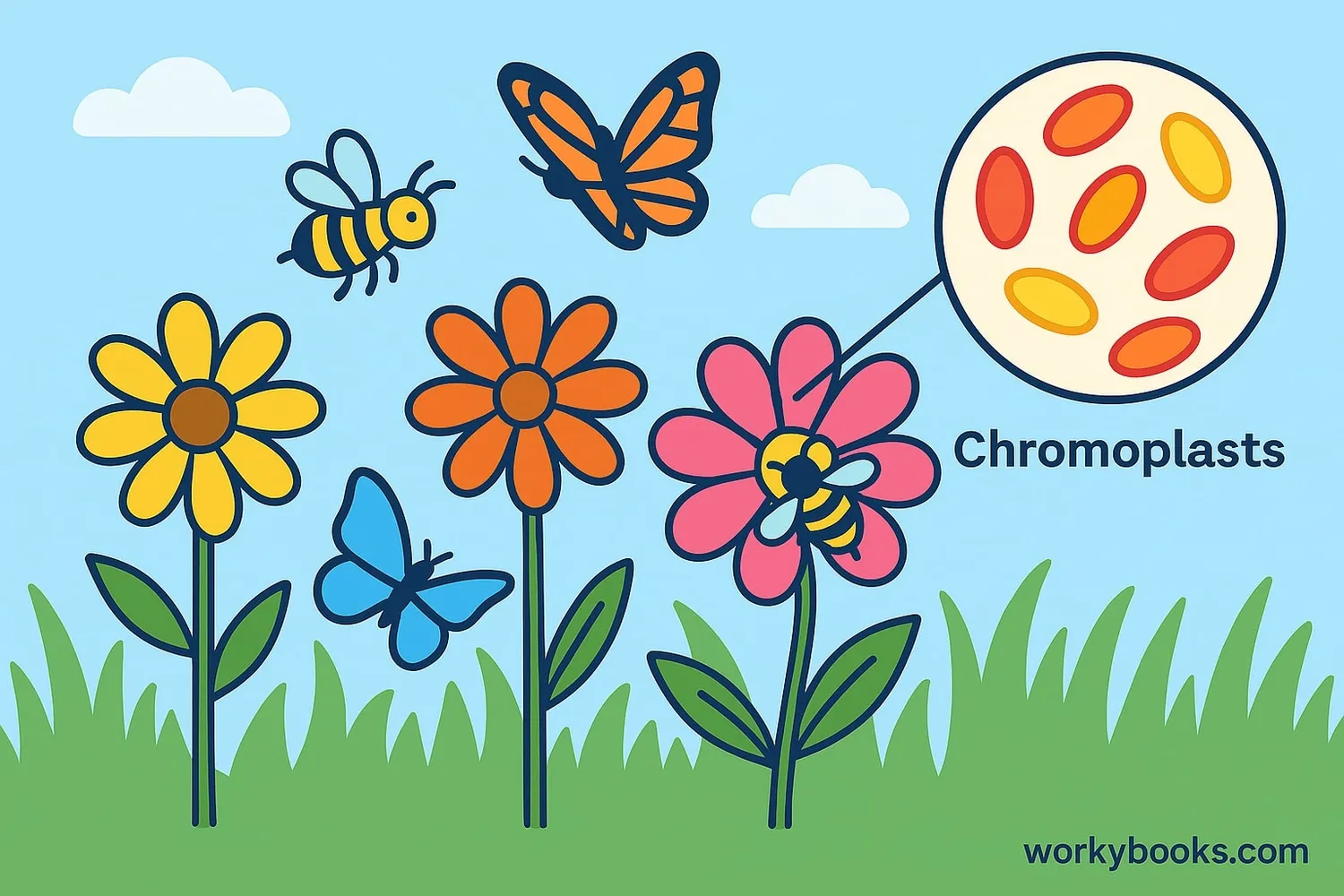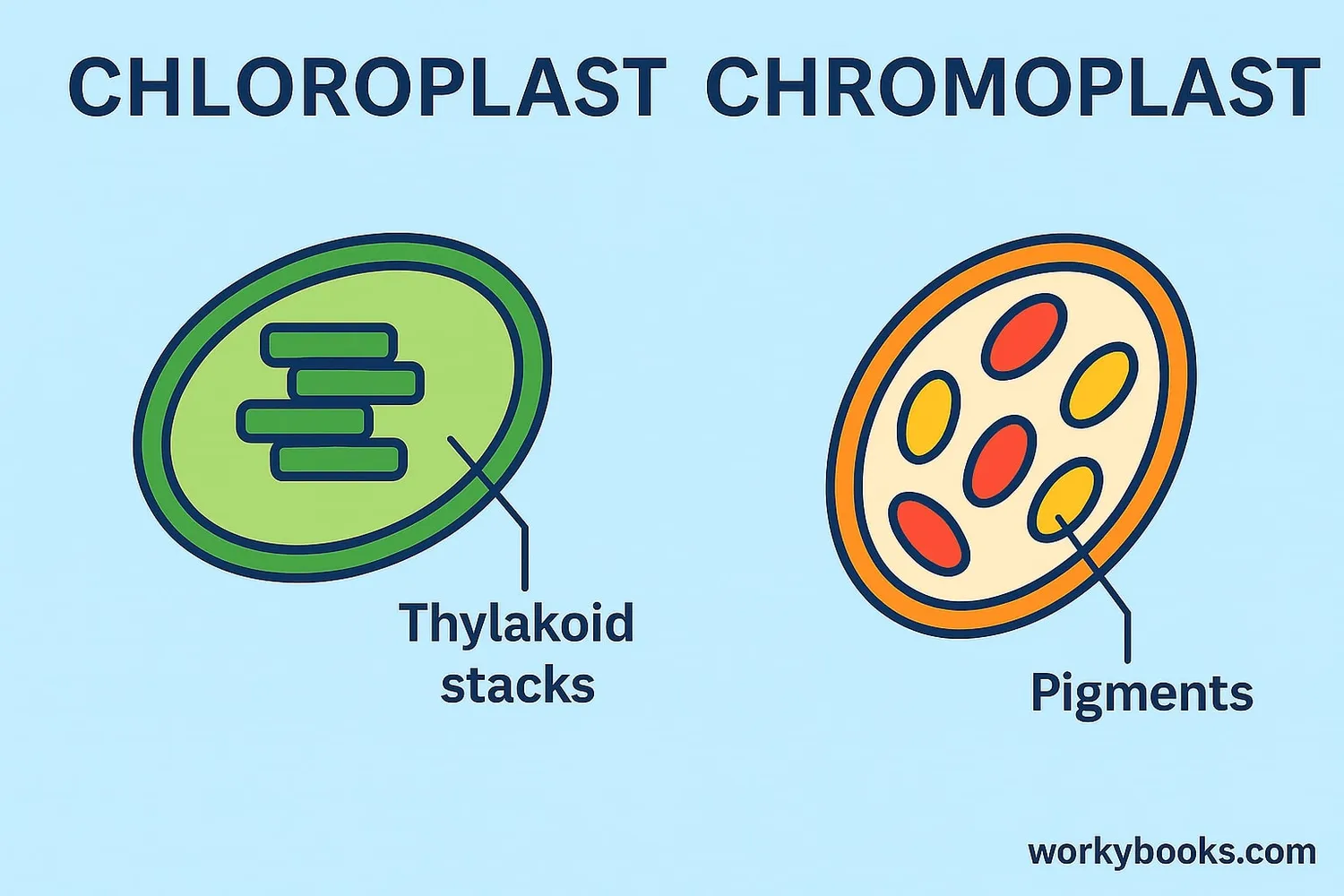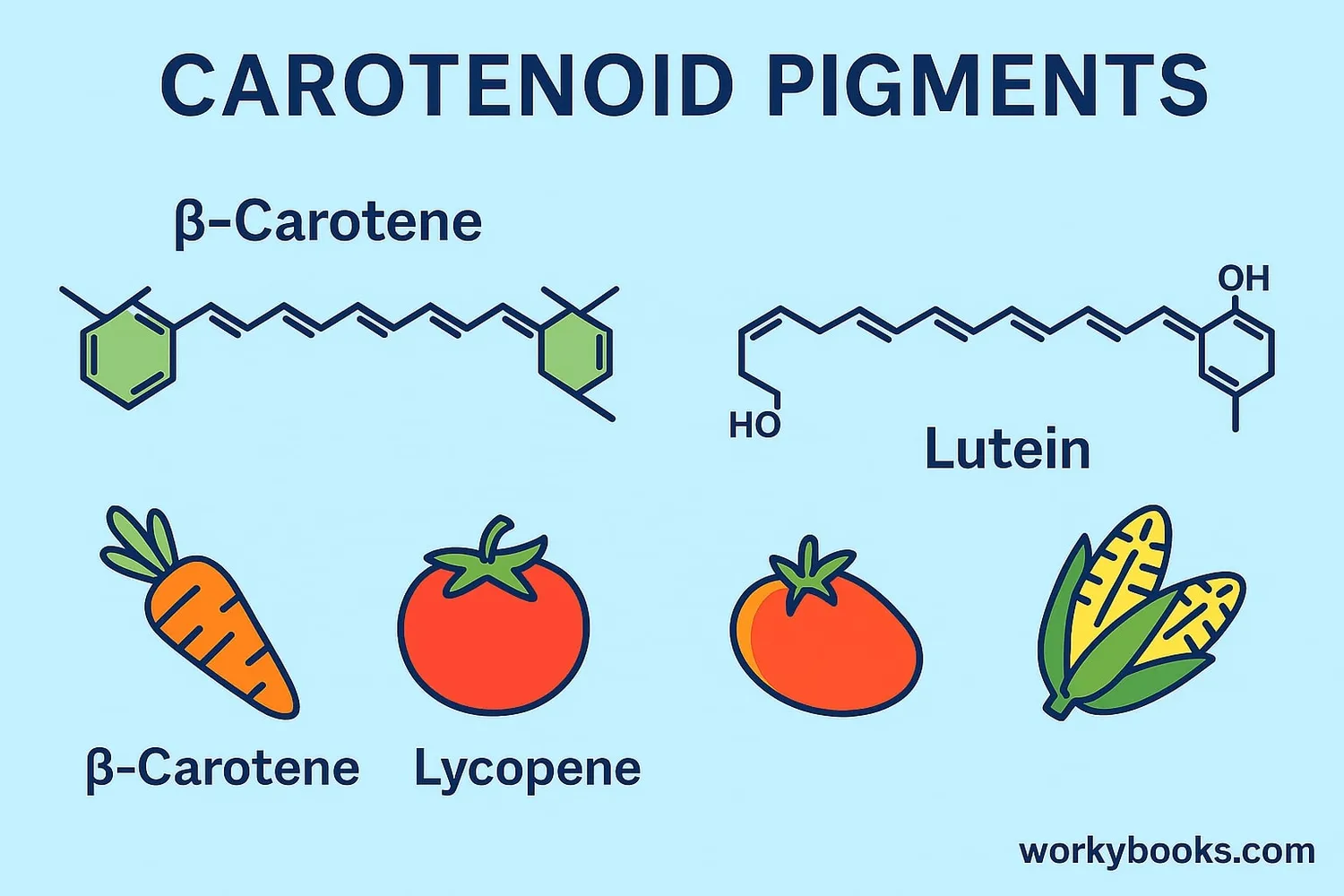Chromoplast - Definition, Examples, Quiz, FAQ, Trivia
Discover how plants create their beautiful colors!
What are Chromoplasts?

Chromoplasts are special parts inside plant cells that create and store colorful pigments. They're responsible for the beautiful colors we see in flowers, fruits, and some vegetables. Think of them as nature's tiny paint factories!
The word "chromoplast" comes from Greek words: "chroma" meaning color and "plast" meaning formed or molded. So chromoplasts are literally "color formers"!
Unlike chloroplasts that make plants green, chromoplasts create other colors like red, orange, and yellow. They develop from other plastids (cell parts) when plants need to show their colors to attract animals for pollination or seed spreading.
Did You Know?
Chromoplasts don't just make plants pretty - their colors help plants survive by attracting pollinators and seed dispersers!
What Do Chromoplasts Do?

Chromoplasts have several important jobs in plants:
Color Production
They create and store colorful pigments that give plants their vibrant appearance
Attract Pollinators
Bright colors attract bees, butterflies, and birds that help with pollination
Seed Spreading
Colorful fruits attract animals that eat them and spread the seeds
Nutrient Storage
Some chromoplasts store important nutrients like vitamins
Chromoplasts are especially important in fruits. As fruits ripen, chloroplasts (which make plants green) often transform into chromoplasts. This color change signals to animals that the fruit is ready to eat. The animal then eats the fruit and spreads the seeds to new locations.
Colorful Examples!
Carrots get their orange color from chromoplasts, tomatoes turn red because of them, and marigold flowers show bright yellows and oranges thanks to chromoplasts!
Chromoplasts vs. Chloroplasts

While both are plastids (specialized parts within plant cells), chromoplasts and chloroplasts have different roles:
| Feature | Chromoplast | Chloroplast |
|---|---|---|
| Main Function | Produce and store colorful pigments | Perform photosynthesis (make food) |
| Colors | Red, orange, yellow | Green |
| Pigments | Carotenoids (like beta-carotene) | Chlorophyll |
| Found In | Flowers, fruits, roots, autumn leaves | Leaves, stems, unripe fruits |
| Can Transform? | Often develop from chloroplasts | Can turn into chromoplasts |
An interesting fact is that chromoplasts and chloroplasts can transform into each other! When a fruit ripens, its chloroplasts often turn into chromoplasts, changing from green to red, orange, or yellow. Similarly, chromoplasts can sometimes turn back into chloroplasts under special conditions.
There's another type called leucoplasts - colorless plastids that store starch or oils. All these plastids are related and can change from one form to another based on what the plant needs.
Pigments in Chromoplasts

The beautiful colors in chromoplasts come from special pigments called carotenoids. These pigments have two important jobs:
1. Creating the vibrant colors that attract animals
2. Acting as antioxidants that protect plants from damage
Here are some common carotenoids found in chromoplasts:
Beta-Carotene
Orange pigment found in carrots, sweet potatoes, and pumpkins
Lycopene
Red pigment found in tomatoes, watermelon, and red peppers
Lutein
Yellow pigment found in marigolds, spinach, and egg yolks
These pigments do more than just make plants colorful - they're also important nutrients for humans! Beta-carotene turns into vitamin A in our bodies, which is important for healthy eyes and skin. Lycopene is a powerful antioxidant that helps protect our cells.
The structure of chromoplasts helps them store these pigments efficiently. They have special membranes and structures that hold the pigments and keep them stable until the plant needs to show its colors.
Chromoplast Quiz
Test your knowledge about chromoplasts with this quiz! Answer all 5 questions to see how much you've learned.
Frequently Asked Questions
Here are answers to some common questions about chromoplasts:
Fun Chromoplast Facts
Discover some amazing facts about chromoplasts and plant colors:
Carrot Colors
Carrots weren't always orange! Original carrots were purple and yellow. Orange carrots were developed in the 17th century to honor the Dutch royal family.
Flamingo Colors
Flamingos get their pink color from the carotenoids in the algae and shrimp they eat. The pigments are stored in their feathers!
Tomato Transformation
As tomatoes ripen, their chloroplasts transform into chromoplasts. This process changes the green chlorophyll into red lycopene pigment.
Ancient Colors
Scientists have discovered carotenoid pigments in 100-million-year-old fossilized flowers, showing that chromoplasts have been coloring plants since dinosaur times!


